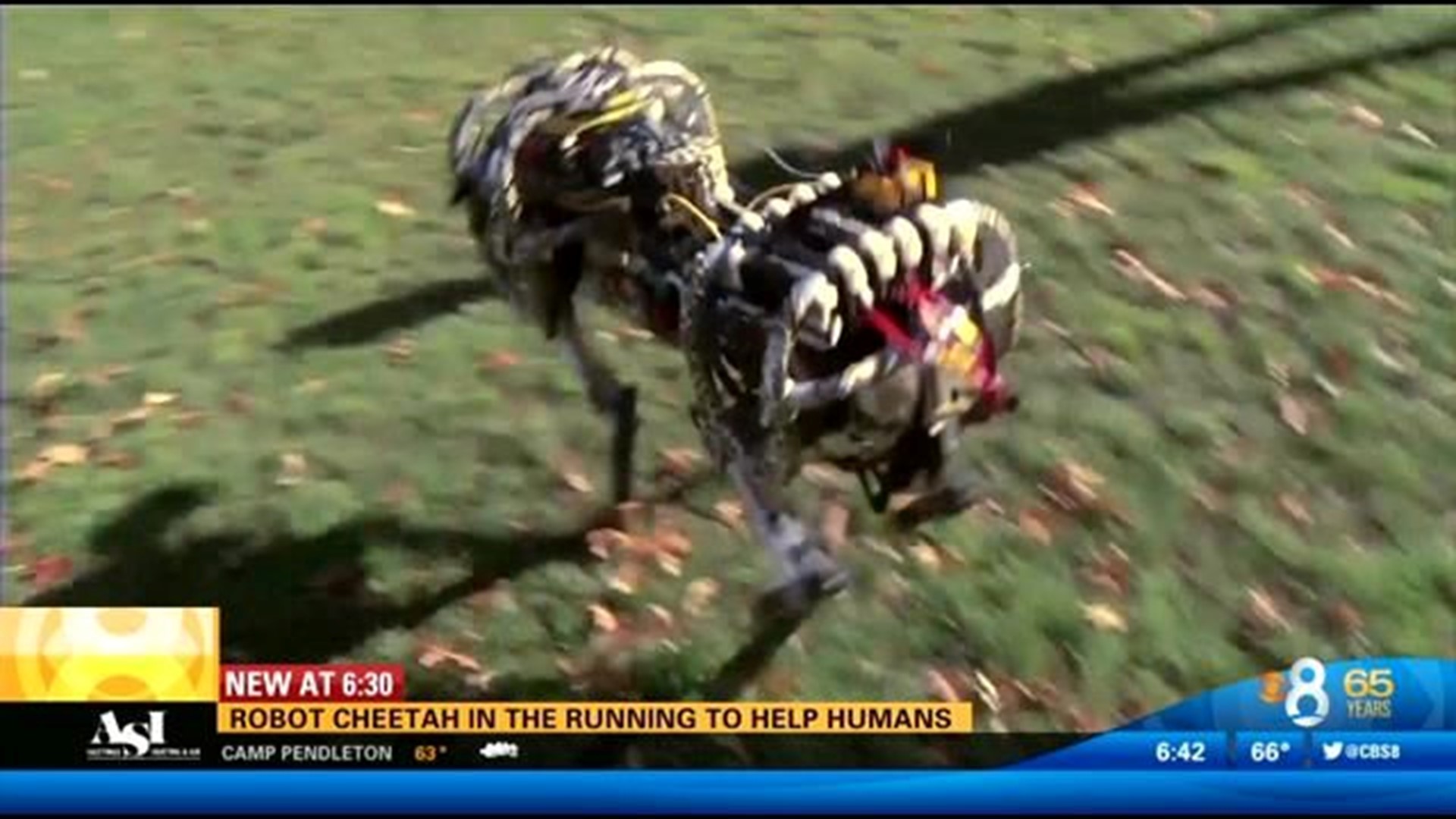SAN DIEGO (CBS 8) - It's a robot unlike any other. Inspired by the world's fastest land animal, researchers at MIT unveiled the "cheetah robot" that can run and jump on its own power. Engineers have high hopes the robot could help humans.
Karroo the cheetah lives at the San Diego Zoo. What the 14-year-old can do is absolutely inspiring
"This cat can take off and in 6 seconds and it's over, 110 yards poof it's done," animal training supervisor Kathy Marmack said.
Inspired by the fastest land animal on earth, a team of researchers have created a 70-pound cheetah robot. What makes the bot so cheetah-like isn't the shape of its metal frame, but a new algorithm that allows the robot to run and jump like a cheetah -- sort of.
"This robot can actually jump about 40 centimeters high and it can land very safely because of this motor technology we developed," associate professor Sangbae Kim said.
Using less power than a microwave oven, it's being called the Ferrari in the robotics world. Robo-cheetah is controlled by video game technology and nifty sensors.
"There are sensors inside the robot which measures the angle of the leg," research scientist Hae-Won Park said.
That information then gets sent to the main computer.
"Cheetahs can hit 70 miles an hour and it's unbelievable. They can hit 45 miles per hour in 2 seconds flat," Marmack said.
Right now Robo-cheetah runs 10 miles per hour. In time, researchers say the design could reach speeds up to 30 miles per hour. Creators of the robot are hoping this new technology could be used to help humans in the long run.
"So we think this technology can be used in prosthetics and wearable technology in the future," Kim said.
Marmack says it's great news.
"If we can learn more about their feet and how they do things also, that's going to make a big difference in robot feet as well," she said.
Researchers at MIT say in the next 10 years their hope is to save lives with this new technology, not only for prosthetics but also in the military.
The project is funded by the US Department of Defense's Advanced Research Projects Agency. The military research arm is also funding a similar robot being developed by Boston Dynamics.

